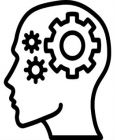Education
Examples of How You Can Use State-Dependent Learning
Take control of your internal state to learn skills and perform academically.
Posted November 11, 2021 Reviewed by Lybi Ma
Key points
- Behavior may be learned better if your internal mental state is similar during practice and testing of the behavior.
- State-dependent learning could reduce worrying through showing yourself that you’re capable of doing well in a practice exam.
- It is unclear which factors determine the effectiveness of chewing gum for enhancement of context-dependent memory.
State-dependent learning (SDL) is the phenomenon that behavior is learned better if your internal mental state is similar during practice and testing of the behavior. It is a powerful performance-enhancement strategy that can be used by anyone. In this post, we will look at some of the things you can do to use this strategy to learn a skill or study better to get better test scores in academic settings.
Here are a few examples illustrating the mechanisms of the SDL phenomenon, as well as an idea of how you can use it to learn faster and better.
Practice With the Material You Want to Perform Well In
If your goal with learning performance enhancement is to get better grades, one way to do this that is backed by research1 is to practice in a way that is as similar as possible to how you expect to be tested. This might mean writing practice essays or exams.
Or maybe your project is learning to bench press. Let’s say you know that you will want to use caffeine for its stimulating benefits when in competition. Using similar doses of caffeine during some or all of your training sessions before the competition to get your technique perfect in a caffeine-fueled mental state is likely a good idea.
One mechanism by which state-dependent learning might reasonably work is through the person simply figuring out what their strengths and weaknesses in a given state of mind are. If you’re using caffeine, for example, you might become jittery if you use too much. By experimenting with your dose of caffeine in training you might be able to find a sweet spot that helps you keep focused on the lift without uncontrollable side effects distracting you from the task.
Similarly, in an academic test environment, you might normally worry that you’re not going to get the grades you want. Worrying has been found to decrease both life satisfaction and test performance.2 By reducing your worry, a potential weakness of your test-taking mental state, you could in theory enhance test performance. State-dependent learning could reduce worrying through you showing yourself that you’re capable of doing well on a practice exam. Then when the real exam comes around, your positive experiences with previous (practice) tests might help you worry less and therefore perform better.
Bonus: You might get extra benefits if your practice is in the form of testing your knowledge. By doing this, you can reap the benefits of the so-called “testing effect.” The testing effect suggests that material to be remembered is better learned if some of the practice consists of generating answers and retrieving information from your long-term memory. It has been backed by a lot of high-quality evidence published in recent years.10 The mechanisms behind the testing effect might include both internal (SDL) and external contextual factors.
Chewing Gum Can Be Effective

There are reasons to believe chewing gum could be an effective tool for the utilization of SDL. It can increase heart rate4 and cortisol levels.3 These are factors that are known to have an impact on people’s internal mental states. Matching levels of cortisol during practice with levels of cortisol during test-taking could, in theory, help you better remember the material you learned while chewing gum when studying for an exam, during the exam.
However, it should be noted that chewing gum has been found to not induce context-dependent memory enhancement effects in certain circumstances.6,7 Evidence for the absence of an effect is also useful information. This suggests that not all changes in internal mental states are relevant for SDL. But, in other studies, chewing gum did result in state-dependent learning.8 Some evidence suggests mood-related mechanisms of SDL could determine its effectiveness.11 On the whole, it is as of yet unclear which factors determine the effectiveness of chewing gum for enhancement of context-dependent memory.
Bonus: Even if chewing gum doesn’t create a distinct enough mental state to aid SDL, it can still be a useful tool to use to enhance learning performance.5 Chewing gum has been found to exert many acute positive effects on cognitive performance, including enhancement of alertness, sustained attention, and executive functions.3,9 There is more evidence for chewing gum enhancing other mechanisms such as enhancement of alertness and sustained attention than there is for it resulting in enhancement of learning through SDL.
Conclusion
The mechanisms of SDL are not currently well understood by researchers. Some evidence and mechanistic reasoning both suggest that mood-related factors such as worrying can be involved in SDL. However, if you use it in a mindful and evidence-based manner, it can likely help you learn faster and better.
References
1. https://psycnet.apa.org/record/1978-24576-001
2. https://www.frontiersin.org/articles/10.3389/fpsyg.2015.01994/full
3. https://www.ncbi.nlm.nih.gov/pmc/articles/PMC4449949/
4. https://pubmed.ncbi.nlm.nih.gov/24857722/
5. https://www.psychologytoday.com/us/blog/finding-new-home/201905/chew-or…
6. https://pubmed.ncbi.nlm.nih.gov/19589361/
7. https://pubmed.ncbi.nlm.nih.gov/17123663/
8. https://pubmed.ncbi.nlm.nih.gov/15458807/
9. https://pubmed.ncbi.nlm.nih.gov/30611764/
10. https://journals.sagepub.com/doi/10.1111/j.1467-9280.2006.01693.x




